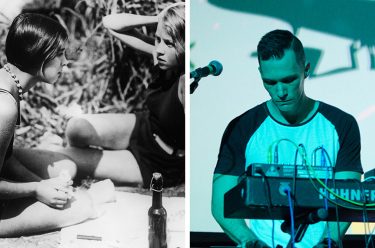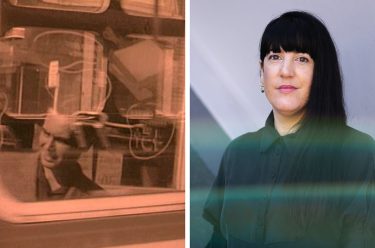A distinctly poetic and at times romantic sensibility permeates our July selection of City Symphony films, The Poetic Cities of Joris Ivens.
Prolific composer, bassist, lecturer and founder and artistic director of Topology, Robert Davidson will craft a unique soundscape comprised of double bass with looping pedals to build up layers of sound, along with piano and electronic sounds to accompany the screening.
Get tickets to City Symphony Live Music & Film series
Australian Cinémathèque, GOMA
11.00 am, Sunday 16 July
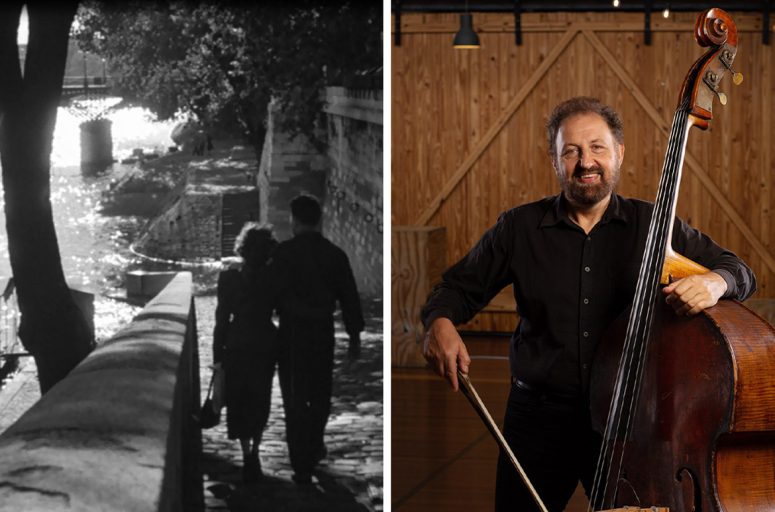
Filmmaker Joris Ivens applies his unique vision to cities in Chile, The Netherlands and France. In Rain 1929 umbrellas unfurl and bicycles splash through puddles as a storm hits the streets of Amsterdam. Travelling to Chile …à Valparaiso 1963 is a collaboration with lauded French New Wave director Chris Marker and a portrait of the titular seaport town.
A unique take on one of the world’s most filmed cities, The Seine Meets Paris 1957 shoots the French capital from a boat gliding down the famous river – the camera captures the wealth of living that happens along the banks – spying lovers holding hands, fishermen hauling in their catch and chic Parisians having lunch in the sunshine.
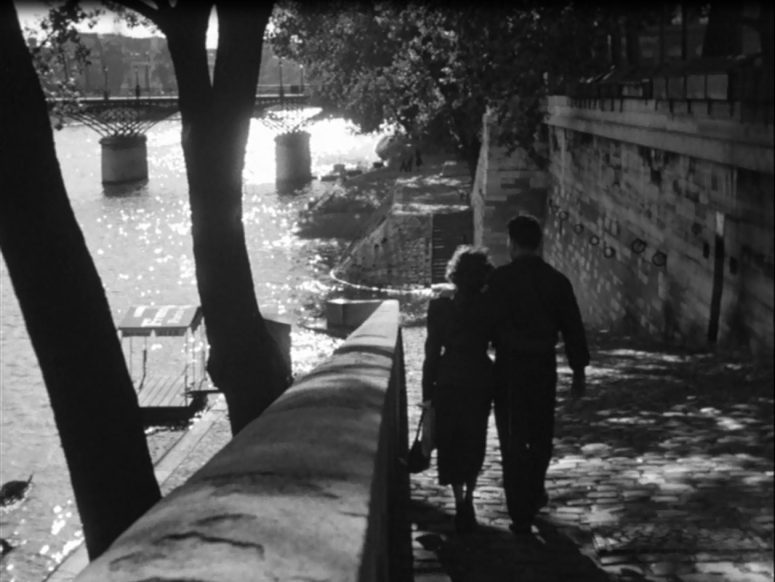
This collection of three short films has a live score crafted by accomplished composer Robert Davidson. Davidson is founder and artistic director of Topology and will be in solo-mode performing a unique soundscape comprised of mostly double bass with piano to build up layers of sound and some electronic experimentation. We asked Robert about his preparations for the forthcoming performance.
Q: You were given three films to watch and craft a live score for, where do you begin when thinking about what music you’ll create? What did you think of the films when you watched them?
A: First I simply watched each film, making notes of what aspects I thought I’d like to highlight or reflect in the music. Pretty soon I started to play along with the film, improvising and finding ideas. Once I had some principle musical ideas, I separately worked with them, getting to know them and potential variations and extensions. Then I looped individual short scenes of about 20-30 seconds, playing along with them, and working through the film that way. Then I played through the whole film in a semi-improvised way, using the ideas I found in the looping process. The next stage was to write out some music in order, to give an overall structure, though still with areas for improvisation. I practised this score without the film, and once I felt confident with it, played through sections as written, and finally through the whole film many times. I really enjoyed each of the films for their curious visual language, close observation and (my favourite thing) taking me to a different time and place.
Q: Did you watch the films with their original soundtracks, or do you prefer to encounter them without sound when you start to think about what music you’ll make? And how did you choose the style of music you’ll use?
A: Yes, I watched all of them with the original soundtrack. The original scores are all very accomplished, particularly the masterful score by Eisler for Regen (Rain). My music is very different from Eisler’s so I had to work out a way to be myself while also connecting with the film. The last thing I wanted to do was to imitate Eisler. M.Philippe-Gerard’s very Parisian score for La Seine a recontré Paris (The Seine Meets Paris) is also something I wanted to contrast my music from – not to evoke Paris too obviously with style. I had to follow my intuition for style, which is less about evoking a scene for me than describing an emotional reaction.
Q: There is a thread of water and the city throughout each of these three short films. In Rain, the filmmakers capture the city as a downpour sweeps across streets, …à Valparaiso is a city built into steep hills beside the sea and the port with its industry is featured, finally The Seine Meets Paris captures Paris from the perspective of the Seine and the life about the riverbank. Are you thinking of incorporating an elemental aspect in your live score for the films?
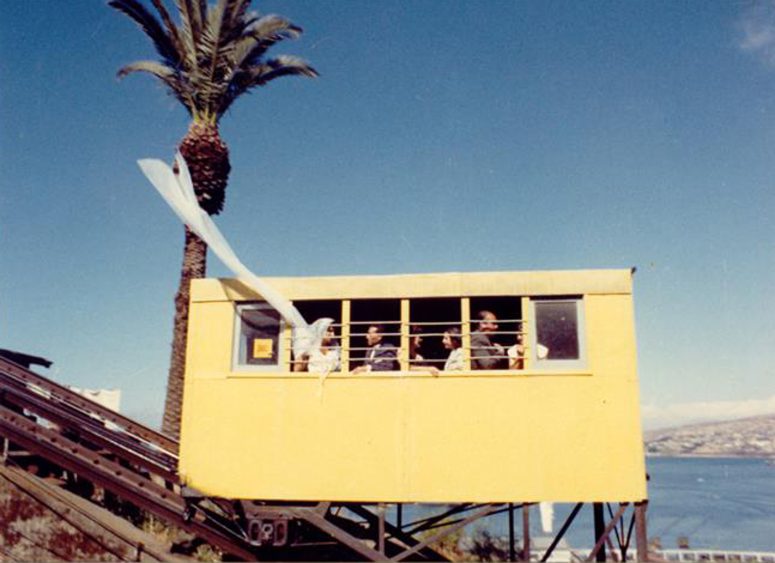
A: Water is a great motif for the kind of music I like to create. I’m allowing water to inform the musical motifs and melodies, which flow and vary in water-like ways. I tend to steer clear of too-obvious depictions of natural phenomena, but I do allow myself some raindrop motifs and rippling fast notes that repeat and vary, rather like a stream of water stays in one shape but is constantly altering in details.
Q: You’re Senior Lecturer in Composition at the University of Queensland and when we’ve spoken previously you mentioned that you’ve set the task of composing music for silent films for some of your students. When we ask musicians to write a live score for silent films, we place an emphasis on the importance of reading the tone of the film and not overwhelming the film with music, instead working alongside the story of the film and to think of the film as a creative collaborator. Do you set guiding principles for your students and did you bring the experience of watching your students craft a score to this performance at GOMA?
A: With my students, I have discussions about what film music they have found particularly effective in its combination with images, and we try to work out what it is that works for them. I do give some guiding ideas, but of course, rules are also meant to be broken. One is that the images (quite apart from dialogue and sound effects) often take the role of a featured musical part, such as a melody or vocal line, and that one should carefully consider how a melody in the music needs to work in counterpoint with the images. Another analogy for the music is that it is something like lighting, or perfume, rather than directly telling a story or evoking an emotion. Working with the students over a long period has undoubtedly affected my own approach to writing for film, but I don’t know if I can untangle exactly how. I’ve composed music for several documentaries, and given many performances with Topology of a lengthy silent film that I scored: Sally Golding’s editing of 1920s-40s Queensland home movies, ‘Queensland at Home’, and these performances have probably had the biggest effect on the music I’m playing at GOMA.
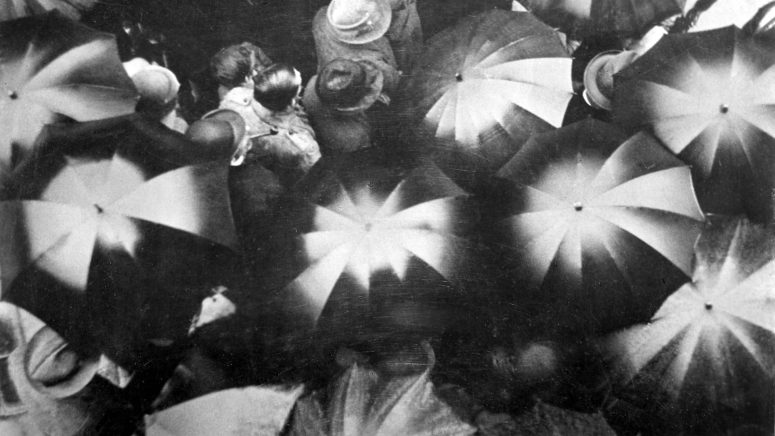
Q: You’re founder and artistic director of Topology, you’ve collaborated with many other musicians including The Saints, the Brodsky Quartet and William Barton, this time you’re in solo mode. How does being solo change you musical style and what music and / or instruments can the audience expect for this performance?
A: I’ve been really exploring playing solo over the last few years, especially when the lockdown made it almost a necessity for many months. I created a solo piano album (‘Diary Pages’), and have given a number of improvised solo double bass performances. I’ll be playing piano and double bass for the GOMA performance, mostly unadorned by anything electronic. It’s certainly a very different experience playing on my own; I really, really love collaborating and get so much pleasure from performing regularly with a wide range of diverse artists. Playing alone has the advantage of intimacy and directness, and embracing the limitations, which can reveal elegant new ways of doing things. As for film, I enjoy the space and simplicity of a single instrument as a complement to images.
UPCOMING LIVE MUSIC & FILM
Live Music & Film: The Poetic Cities of Joris Ivens 1929
Live Music & Film: Calcutta 1969
Live Music & Film: Berlin, Symphony of a Great City 1927
Live Music & Film: Nothing But Time 1921 – 2012
Live Music & Film: Man With a Movie Camera (with violin) 1929
CITY SYMPHONY SPECIAL TICKET OFFER
See the full series and save!
Buy 5 to 9 tickets and receive at 10% discount.
Buy 10 tickets and receive a 20% discount.

